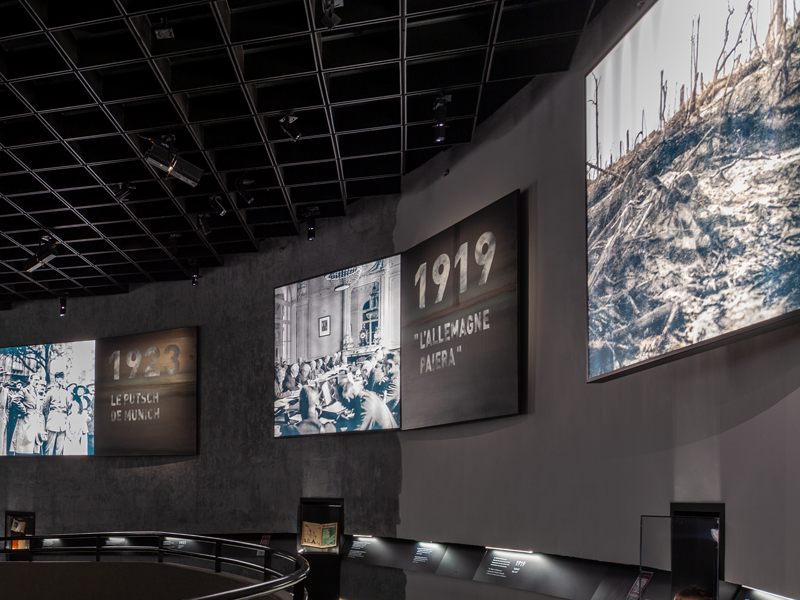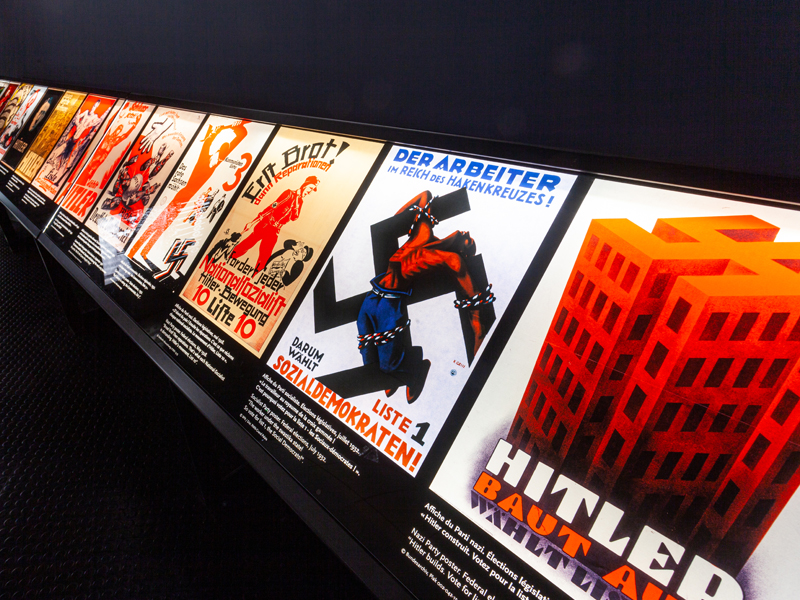World War I was an unprecedented disaster that left 10 million dead and 21 million wounded. Europe emerged from this conflict in tatters and ruins. For Germany, the Treaty of Versailles, dominated by French demands, was a humiliation. It changed the map of Europe that had been in place since the Congress of Vienna.
- In 1923, Adolf Hitler failed to take power by force in Bavaria. The economic crisis, triggered by the New York stock market crash of 1929, spread throughout the world and hit Germany particularly hard, financially dependent as it was on the United States.
- In November 1932, the Nazis came first in the legislative elections. President Paul von Hindenburg appointed Adolf Hitler as Chancellor in January 1933. Following the Reichstag fire, Hitler obtained full power and became the “Führer”.

